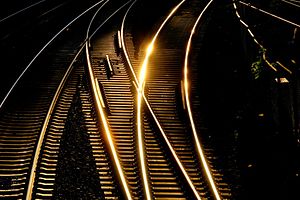Construction of a long-awaited Thai-Chinese railway line that will link Thailand and China through Laos has finally got underway in the northeast Thai province of Nakhon Ratchasima, but the much vaunted and long overdue project still has a long way to go.
The first phase – a 250 kilometer high-speed rail line linking Bangkok to Nakhon Ratchasima — is not expected to be operational until 2021. The entire line, linking the Thai capital with Nong Khai near the Laos border, will stretch 873 kilometers.
Then the line across Laos still needs to be built. But that rail link has been bogged down by costs, a change in hierarchy within the one-party state and fears that China is expecting too much financially from the tiny land-locked and impoverished country, which has embarked on a spending spree regarding big-ticket projects.
Importantly. the trans-Asia rail line is a key plank in China’s Belt and Road Initiative, which Beijing wants to use to underpin future trade and economic growth through a modern-day “Silk Road,” spanning Asia with connecting maritime routes to the Middle East and Europe.
Prime Minister Prayut Chan-ocha said Thailand intended to become a regional “center of connectivity” with rail lines planned across Indochina in the east and Myanmar into India from the west.
Four months ago Thailand signed two contracts worth $157 million with Chinese state enterprises for the current high-speed rail project, providing for engineering and design, and the hiring of Chinese technical advisers.
“This route is to connect to Cambodia, Laos, Myanmar, and Vietnam to China, India and further to other countries,” Prayut said as construction got underway.
But railway construction in Thailand, and in neighboring Cambodia and Laos, has faced enormous delays over design issues and the type of assistance Beijing had on offer.
Two years ago Prayut canceled almost two years of protracted bilateral negotiations, which faltered on issues ranging from investment-sharing, costs, and interest rates to development rights, land use and where to put depots and stations.
It was move hailed by Thailand’s government-friendly press as being in the “national interest” and came after Prayut was criticized for not driving a hard enough bargain with Beijing over its construction plans for rail across the region and through his country.
In Cambodia, allegations of corruption dogged construction of the line linking Phnom Penh with the southern port city of Sihanoukville. Meanwhile, a 400 kilometer rail link connecting the Cambodian capital with the Thai border is expected to come in ahead of a revised schedule. It had been delayed amid problems associated with the relocation of families living along the route, a perennial issue in Cambodia. Much of that line had also fallen into disrepair after it was seriously damaged during the many decades of war, which ended in December 1998.
Nevertheless, Cambodian Transport Minister Sun Chanthol says the line linking Phnom Penh to Poipet is expected to be completed by the end of next year, two years ahead of schedule.
The Laos high speed railway linking Vientiane and Kunming has also been mired by on-again off-again funding issues and fears the country was borrowing too much in order to fast track its massive infrastructure development plans.
But following the latest deal, as reported in 2016, 418 kilometers of track worth $6.28 billion was expected to be completed by 2020 under far more favorable terms than initially offered by the Chinese.
China was expected to pay 70 percent of the costs with Laos picking up the balance, still an extraordinary sum given its gross domestic product stands at just $15.9 billion. This leg’s completion would realize the big dream by 2021 — a railway linking Singapore to Kunming and on to London.
Luke Hunt can be followed on Twitter @lukeanthonyhunt.

































